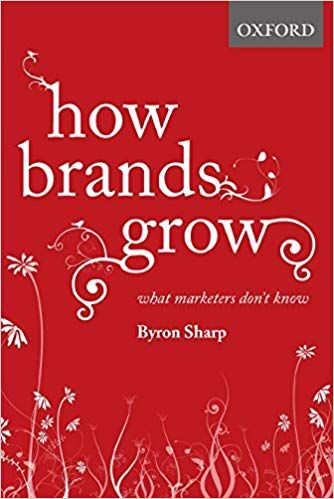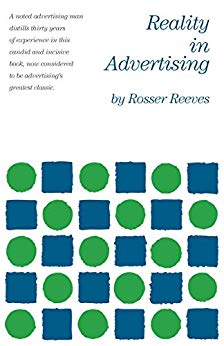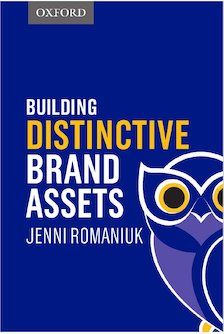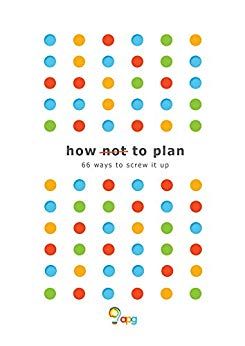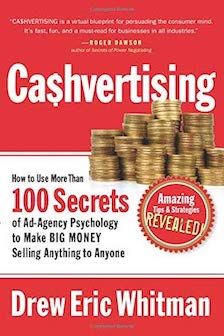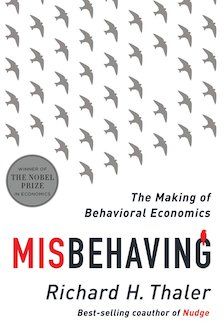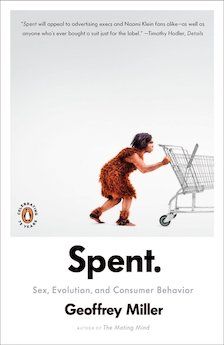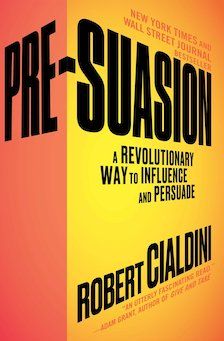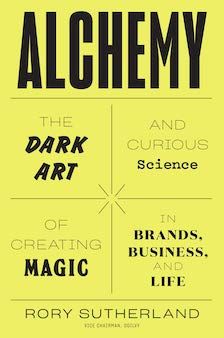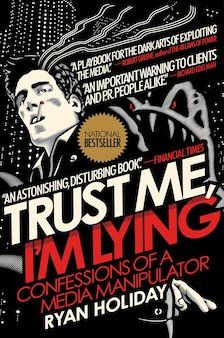It's easy to fall into the ego trap of thinking you know everything about your vocation. It's hard to admit that you still really don't know shit.
These books have shattered my preconceived notions on how to market and grow a brand. The subject matter varies - You'll find a mix of consumer psychology, advertising tactics, and marketing principles.
While I'm by no means an expert book picker, most of these books were published a while back and have stood the test of time. So following the Lindy effect, there's a good chance they'll be relevant regardless of what changes in the marketing landscape.
#1. How Brands Grow: What Marketers Don't Know by Byron Sharp
"Brand competition and growth is largely about building two market-based assets: physical and mental availability. Brands that are easier to buy - for more people, in more situations - have more market share. Innovation and differentiation (when they work) build market-based assets, which last after competitors copy innovation."
5 Key Lessons:
- Growth is due to extraordinary acquisition. - Acquisition is not optional. It is essential to acquire customers just to maintain your brand given that a % of your customers will defect. Growing market penetration beats growing loyalty every time.
- Branding lasts, differentiation does not - Seek meaningless distinctiveness rather than meaningful, perceived differentiation. It's easy for competitors to clone your features. It's hard for them to clone your brand.
- Light buyers of your brand are essential - Contrary to what marketers want to believe, the majority of customers only very occasionally buy a brand. Only a small number of customers buy a category often.
- The dominant way ads work is by refreshing and occasionally building memory structures - These structures improve the chance of a brand being recalled and/or noticed in buying situations; thus increasing the chances of the brand being bought.
- The sales of a brand are like the height at which an airplane flies. - Ad spend is like its engines: while the engines are running everything is fine, but when the engines stop, the descent eventually starts”
#2. Reality in Advertising by Rosser Reeves
"Each advertisement must make a proposition to the consumer. Not just words, not just product puffery, not just show-window advertising. Each advertisement must say to each reader: "Buy this product and you will get this specific benefit."
5 Key Lessons:
- The consumer tends to remember just one thing from an advertisement - one strong claim or one strong concept. - There is a finite limit to what a consumer can remember. He cannot remember all the advertising he reads for he has many other things on his mind.
- Advertising stimulates the sales of a good product and accelerates the destruction of a bad product. - A company with a strong message may get its story into the heads of only a few people, and become rich. Conversely, a company with a bad message may get its story into all the heads, and become bankrupt.
- The USP Principle - #1. Each advertisement must make a proposition to the consumer, #2.The proposition must be one that the competition either cannot, or does not, offer, #3 The proposition must be so strong that it can move the mass millions, i.e, pull over new customers to your product.
- The totality of the advertisement must project a USP as well as a feeling. - What you remember of an orator - his dress, his personality, his conviction - is the brand image. What he said - that is the UPS. The combo of the two can have an overwhelming power. It is better to drape a product, on the nonverbal level, with as many activating and pleasant associations as possible.
- Advertising is salesmanship in print. - Advertising is the art of getting a unique selling proposition into the heads of the most people at the lowest possible cost.
#3. Building Distinctive Brand Assets by Jenni Romaniuk
"A distinctive asset is a non-brand name element that triggers the brand into the memory of category buyers. It is recognizably different in nature from something else of a similar type and readily distinguishable by the senses"
5 Key Lessons:
- The key benefit of remembering distinctive assets is to help that person find that brand with ease when a future need arise - Example: If you see a Mcdonald's sign that says "now serving tacos", your brain now links tacos to McDonald's. So the next time you think of tacos, you'll think of Mcdonald's golden arches and vice versa.
- Branding is the act of attracting a name to something - Using Apple as an example - An apple, airpods, Steve Jobs, The color white...These are all distinctive assets that when exposed to, you associate with the Apple brand.
- The 3 primary reasons to brand: #1 - Stamp the brand’s ownership, #2 - Anchor desired associations to the brand’s part of memory structure for category buyers, and #3 - To act as a bridge between disparate marketing activities
- A major distraction to building a brand's identity is to try to select assets with the strongest meaning - Assets with meaning have expiration dates, you'll risk fighting with competitor's for consumers' minds, and you'll flock to similar assets since competitors are all using the same research.
- 3 Principles for improving execution of shopping assets - #1 - embrace the blank space - less clutter, embrace blank space to guide consumer to what should be noticed, #2 consistency consistency consistency - make asset visually consistent across all iterations of brand, #3 Reach the hard to teach
#4. Marketing to Mindstates: The Practical Guide to Applying Behavior Design to Research and Marketing by Will Leach
“As marketers, we have to understand how to hack the most advanced filtering system ever created: the human mind. Because of the impending marketing onslaught, people will psychologically filter out the vast majority of advertising."
"As a marketer, you can’t control someone’s location, the people they’re around, or the mood they’re in, but you can control how you frame your message."
5 Key Lessons:
- To understand non-conscious mindstates, we need to understand these 4 key factors - Your consumer’s high-order goals, their primary motivations, if they take a promotion or prevention approach to reaching their goals, and the cognitive heuristics (mental shortcuts) they use when making decisions.
- We are not rational beings influenced by emotion - Instead, we are emotional beings who hope to rationalize our behaviors after we make them. The human mind isn’t a pristine well. It’s a muddy pit.
- As a marketer, you should always strive to target and serve people’s higher-order goals. - Higher-order goals are much more emotional and tap more directly into the key needs and desires of our hearts. If you're selling a closet organizing product, a functional goal might be "I want to be more organized". On the flipside, a higher-order goal might be "I want to avoid the shame of being a disorganized person that doesn't have their shit together".
- With your creative team, brainstorm ways to activate consumers’ higher-order goal through your brand. - If you’re offering a new product, ask, “How can we communicate that our new product will help this person reach their higher-order goal?”
- To find the more emotional, higher-order goals of a consumer, ask this question - “Beyond the functional benefit of this product or service, what’s the benefit to your life?"
#5. How not to Plan: 66 ways to screw it up by APG Ltd
"By all means let’s be ambitious. But root your ambitions in knowledge and reality. Remember: ‘A goal without a plan is just a wish’."
5 Key Lessons:
- How To Plan - Start with business objectives. Then set marketing objectives. Then think people, not just numbers (who do we need to reach?). Then check budgets, can we reach enough people? Set KPI's for each objective and start tracking them.
- Always aim to get more customers, from all segments of the market - Go for reach, rather than frequency. Reach as many category buyers as possible.
- Make your brand ubiquitous. - Maximize distribution in existing outlets and think creatively about new ones. Make things easy for buyers. Make brand easy to find. Make your brand easy to buy.
- Most people don’t have strong beliefs about brands - In fact, most don’t think about brands at all. At least not consciously. That’s why rational messages have so little influence on people.
- Target situations and states of mind, not segments. - Make yours the brand that people are most likely to choose when they’re doing X, feeling Y, or want to be Z.
#6. CA$HVERTISING: How to Use More than 100 Secrets of Ad-Agency Psychology to Make Big Money Selling Anything to Anyone by Drew Eric Whitman
"Advertising’s purpose is not to entertain, but to persuade consumers to part with billions of dollars every day in exchange for products and services."
"Advertising is a subset of communication. Sales is a subset of advertising. Persuasion is a subset of sales. And psychology is a subset of persuasion. Each is a form of the other, and it all leads back to psychology: the study of the human mind."
5 Key Lessons:
- Unless your headline sells your product, you have wasted 90 percent of your money. - Put the one thing that’s most important to them in the place where they’re most likely to see it: your headline.
- People buy because of emotion and justify with logic. - Force an emotional response by touching on a basic want or need..
- In advertising, it’s not clever to be clever. - Being creative for the sake of being creative is a waste of time and money, and is a complete misunderstanding of the principles of creating a headline.
- Long copy satisfies both parties. - Some people need long copy to be convinced; others can decide with less information. The only reason for using short copy is when there isn’t much to say.
- People don’t buy your product for its features; they buy it for its benefits. - They don’t care about you or your product, but only how your product or service can make their lives better.
#7. Misbehaving: The Making of Behavioral Economics by Robert Thaler
"Misbehaving - Behavior that is inconsistent with the idealized model of behavior that is at the heart of what we call economic theory."
"The premises on which economic theory rests are flawed. First, the optimization problems that ordinary people confront are often too hard for them to solve, or even come close to solving. Second, the beliefs upon which people make their choices are not unbiased."
5 Key Lessons:
- Losses hurt about twice as much as gains make us feel good. - We experience life in terms of changes, we feel diminishing sensitivity to both gains and losses, and losses sting more than equivalently-sized gains feel good.
- Everyone is interested in a good deal - Marketers have an incentive to manipulate the perceived reference price and create the illusion of a "deal".
- Reward managers for making value maximizing decisions - Even if they turn out to lose money, you should reward those that are willing to take risks based on evidence.
- Treating all money as the same, and also as the primary driver of human motivation, is not a good description of reality.
- If you want to encourage someone to do something, make it easy. - If you want people to comply with some norm or rule, it is a good strategy to inform them that most other people comply.
#8. Spent: Sex, Evolution, and Consumer Behavior by Geoffrey Miller
"Many products are signals first and material objects second. Our vast social-primate brains evolved to pursue one central social goal: to look good in the eyes of others."
5 Key Lessons
- Products fall into two overlapping categories: (1) things that display our desirable traits and bring us “status” when others see that we own them, and (2) things that push our pleasure buttons and bring us satisfaction even if no one else knows we have them.
- Marketing holds up a mirror to our selves, reflecting our beliefs and desires so we can recognize, remember, evaluate, and transform them.
- The fundamental consumerist delusion - that other people care more about the artificial products you display through consumerist spending than about the natural traits you display through normal conversation, cooperation, and cuddling.
- Conspicuous consumption - Wherever the main function of acquiring, using, and displaying the product is to signal one’s individual traits, wealth, and status to observers
- Consumerism depends on forgetting a truth and believing a falsehood. The truth that must be forgotten is that we humans have already spent millions of years evolving awesomely effective ways to display our mental and moral traits to one another through natural social behaviors. We can all do so without credentials, careers, credit ratings, or crate loads of product.
#9. Pre-Suasion: A Revolutionary Way to Influence and Persuade by Robert Cialdini
"The best persuaders become the best through pre-suasion—the process of arranging for recipients to be receptive to a message before they encounter it."
5 Key Lessons:
- What’s salient is deemed important - Channeling an audience's attention to a particular message can make recipients more open to a message pre-suasively, before they process it.
- The core motives of social influence - #1. Cultivate Relationships through reciprocity and liking, #2. Reduce Uncertainty through social proof and authority, #3. Motivate Action through consistency and scarcity
- The basic idea of pre-suasion - By guiding preliminary attention strategically, a communicator can move recipients into agreement with a message before they experience it. The key is to focus them initially on concepts that are aligned associatively with the yet-to-be-encountered information.
- The main purpose of speech is to direct listeners’ attention to a selected sector of reality. Once that is accomplished, the listeners’ existing associations to the now-spotlighted sector will take over to determine the reaction.
- Certain cues seize our attention vigorously. Those that do so most powerfully are linked to our survival. Sexual and violent stimuli are prime examples.
#10. Alchemy: The Dark Art and Curious Science of Creating Magic in Brands, Business, and Life by Rory Sutherland
"If we allow the world to be run by logical people, we will only discover logical things. But in real life, most things aren’t logical - they are psycho-logical."
5 Key Lessons:
- The fact that something does not work through a known and logical mechanism should not make us unwilling to adopt it. - We used aspirin to reduce pain for a century without having the faintest idea of why it worked.
- It doesn’t always pay to be logical if everyone else is also being logical. - Logic may be a good way to defend and explain a decision, but it is not always a good way to reach one. If everyone is approaching a problem in a "logical" way, it could pay off to take what would be considered an illogical approach.
- We don’t value things; we value their meaning. What they are is determined by the laws of physics, but what they mean is determined by the laws of psychology.
- If we are in denial about unconscious motivation, we forget to scent the soap. If we adopt a narrow view of human motivation, we regard any suggestion of scenting the soap as silly. But, like petals on a flower, it is the apparently pointless thing that makes the system work.
- People do not choose Brand A over Brand B because they think Brand A is better, but because they are more certain that it is good. - Decision makers can satisfice either by finding optimum solutions for a simplified world, or by finding satisfactory solutions for a more realistic world.
#11. Trust Me, I'm Lying: Confessions of a Media Manipulator by Ryan Holiday
"We’re a country governed by public opinion, and public opinion is largely governed by the press, so isn’t it critical to understand what governs the press? What rules over the media, he concluded, rules over the country."
5 Key Lessons:
- Every decision a publisher makes is ruled by one dictum: Traffic by any means - Blogs are built and run with an exit in mind. This is really why they need scoops and acquire marquee bloggers—to build up their names for investors and to show a trend of rapidly increasing traffic.
- Journalists are rarely in a position to establish the truth of an issue themselves, since they didn’t witness it personally. - They are “entirely dependent on self-interested ‘sources’” to supply their facts. Every part of the news-making process is defined by this relationship; everything is colored by this reality.
- If it doesn’t spread, it’s dead. - With social sharing comes traffic, and with traffic comes money. Content that isn’t shared isn’t worth anything.
- A powerful predictor of whether content will spread online is valence, or the degree of positive or negative emotion a person is made to feel. Hopelessness, despair—these drive us to do nothing. Pity, empathy—those drive us to do something, like get up from our computers to act. But anger, fear, excitement, laughter, and outrage—these drive us to spread.
- If you invest early in a blogger, you can buy your influence very cheaply.
